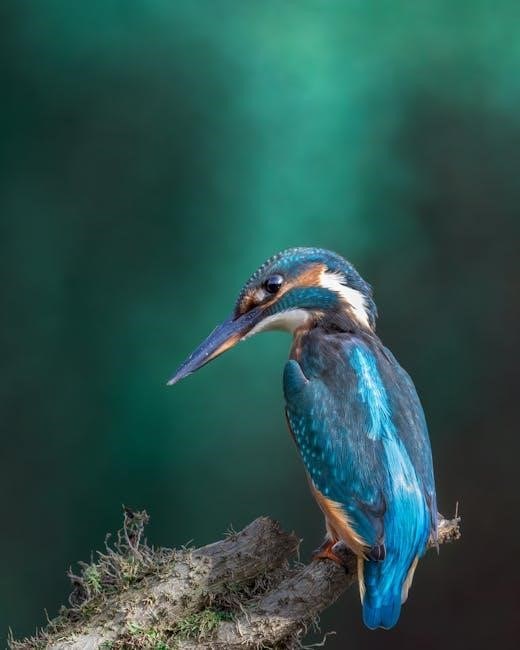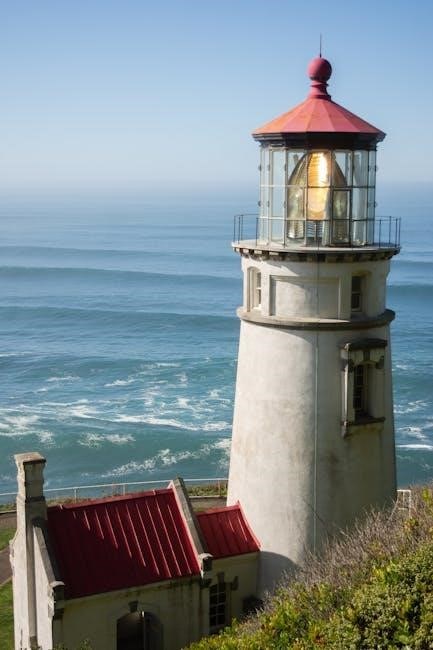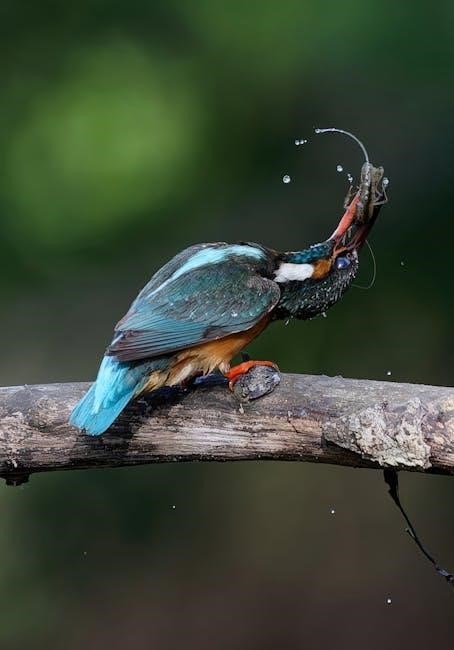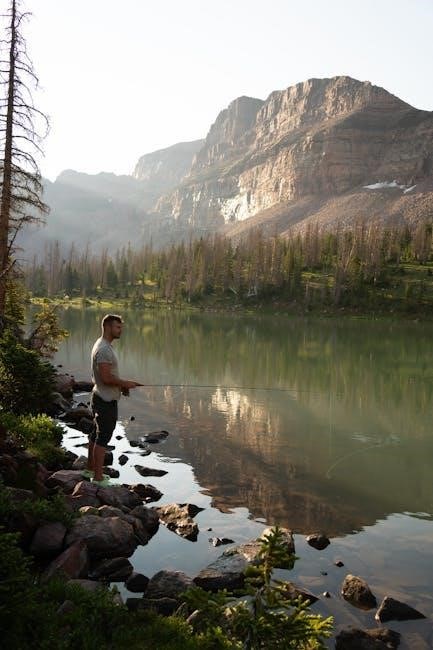Tipping fly fishing guides is a customary way to show appreciation for their expertise, effort, and personalized service. Standard gratuities range between 15% to 20% of the trip cost, reflecting the guide’s dedication, skill, and overall experience.
Overview of Tipping Etiquette in Fly Fishing
Tipping etiquette in fly fishing is a cornerstone of showing appreciation for guides’ expertise and effort. While not mandatory, it is widely expected and reflects the quality of service received. Guides often rely on tips as a significant portion of their income, making it a meaningful way to acknowledge their dedication. Proper etiquette involves considering factors like the guide’s diligence, friendliness, and skill, as well as the overall experience provided. Tipping customs vary, but the gesture is always a positive way to express gratitude for a memorable and well-guided fishing trip. It’s a tradition that strengthens the bond between anglers and guides.

Standard Tipping Rates for Fly Fishing Guides
Tipping typically ranges from $75 to $100 for a full-day trip, reflecting 15-20% of the total cost, based on the guide’s service quality.
Percentage-Based Tipping Guidelines
Tipping fly fishing guides is commonly based on a percentage of the total trip cost, typically ranging from 15% to 20%. For a full-day float trip, this often translates to around $100, reflecting the guide’s expertise and effort. These percentages are widely accepted across different regions, ensuring consistency in gratuity practices. The quality of service directly influences the chosen percentage, allowing clients to adjust based on their experience. This approach provides a fair and structured method for showing appreciation, ensuring guides are appropriately compensated for their dedication and skill.
Adjusting Tips Based on Service Quality
Tip amounts for fly fishing guides should reflect the quality of service provided. For exceptional experiences, such as when guides demonstrate outstanding knowledge, work tirelessly, or go above and beyond, consider increasing the tip to 20% or more of the trip cost. Conversely, if the service is subpar, such as poor communication or lack of effort, it’s appropriate to adjust the gratuity downward. The key is to base the tip on the guide’s performance and how well they met or exceeded your expectations. This ensures fairness for both parties, rewarding excellence while addressing shortcomings in service quality.
Factors Influencing Tip Amounts
Tip amounts are influenced by the guide’s diligence, friendliness, and skill, as well as trip length, complexity, and amenities provided, such as food or equipment.
Guide’s Diligence, Friendliness, and Skill
A guide’s diligence, friendliness, and skill significantly impact tip amounts. Diligence refers to their effort in finding prime fishing spots and ensuring a productive trip. Friendliness enhances the overall experience, making anglers feel comfortable and valued. Skill level, including expertise in techniques and knowledge of the water, directly affects the trip’s success. Guides who go above and beyond, such as offering personalized instruction or handling challenging conditions, often receive higher tips. These qualities make the experience memorable and justify increased gratuity. A guide’s attitude and professionalism are key factors in determining a fair tip, as they reflect the value provided to the client.
Trip Length and Complexity
Trip length and complexity play a significant role in determining tip amounts for fly fishing guides. Longer trips, such as full-day excursions or multi-day adventures, often require more effort and resources from the guide. For example, a full-day float trip typically warrants a tip of $100 or more, while shorter half-day trips might see slightly lower gratuities. Complexity, such as navigating remote locations, handling varied fishing techniques, or managing challenging weather conditions, also justifies higher tips. Guides who adapt to these factors and ensure a smooth, enjoyable experience deserve additional compensation, as their workload and responsibilities increase with trip duration and complexity.
Amenities Provided by the Guide
Amenities provided by the guide significantly influence tip amounts. Guides who offer additional services or items, such as meals, drinks, flies, or equipment, add convenience and comfort to the trip. These extras enhance the overall experience, showing the guide’s commitment to ensuring a memorable day. For example, providing a prepared lunch or essential gear saves clients time and effort. Such thoughtful gestures justify higher tips, as they reflect the guide’s dedication to exceeding expectations. When calculating gratuity, consider the value of these amenities, as they often go beyond standard services and demonstrate exceptional care for the client’s needs and enjoyment.

Regional Variations in Tipping Norms
Tipping norms vary by region, with gratuities typically ranging from 15% to 20% of the trip cost across states like Alaska, Hawaii, and North Carolina.
Tipping Standards Across Different States
Tipping standards for fly fishing guides vary slightly across different states but generally fall within the 15% to 20% range of the total trip cost. In states like Alaska and Hawaii, where guided trips often involve additional amenities, tips tend to lean toward the higher end of this spectrum. Similarly, in North Carolina and other popular fly fishing destinations, a 15% to 20% gratuity is considered standard. Regional consistency in tipping norms reflects the industry-wide expectation that guides deserve fair compensation for their expertise and service. Factors such as trip length, complexity, and the amenities provided can slightly influence the final amount, ensuring the tip aligns with the quality of the experience.
What Fly Fishing Guides Do to Earn Tips
Fly fishing guides earn tips by providing expertise, ensuring a great experience, handling logistics, instructing effectively, and enhancing the overall trip quality for their clients.
Roles and Responsibilities of a Fly Fishing Guide
Fly fishing guides are responsible for ensuring a safe, enjoyable, and successful fishing experience. Their duties include instructing clients, managing equipment, and navigating waterways. They often provide expert knowledge of local fisheries, recommend effective techniques, and help clients catch fish. Guides also handle logistics, such as arranging permits, preparing gear, and offering transportation. Many provide additional amenities like meals, drinks, and flies. Their role extends to enhancing the overall experience by adapting to clients’ skill levels and preferences. A good guide prioritizes safety, environmental respect, and client satisfaction, making their efforts worthy of appreciation through tips.

When to Adjust Your Tip
Adjust your tip based on the guide’s effort, skill, and overall experience. Increase for exceptional service or success; decrease if expectations weren’t met, but remain fair and reasonable.
Reasons to Increase or Decrease Gratuity
Gratuity for fly fishing guides can be adjusted based on their performance and your overall experience. Increase the tip for exceptional service, such as a guide’s extra effort to ensure a successful trip, outstanding knowledge of fishing spots, or a friendly and supportive attitude. Conversely, decrease the tip if expectations were not met, such as poor preparation, lack of communication, or limited effort. Be fair and considerate, as guides often rely on tips to supplement their income. Adjustments should reflect the guide’s dedication and the value they added to your fishing experience, ensuring the tip aligns with the quality of service received.
Examples of Good Service and Appropriate Tips
A guide providing exceptional knowledge, effort, and hospitality may warrant a 20-25% tip. For a $400 trip, $80-$100 reflects excellent service and memorable experiences.
Real-Life Scenarios and Tipping Decisions
In real-life scenarios, tipping decisions often hinge on the guide’s effort, trip success, and overall experience. For instance, if a guide works diligently, shares expertise, and ensures a memorable day, a 20% tip ($80 on a $400 trip) is standard. If the guide exceeds expectations, such as landing multiple fish or providing exceptional hospitality, a 25-30% tip ($100-$120) reflects gratitude. Conversely, if service is lacking, tipping on the lower end (15%) may be appropriate. Factors like trip length, amenities, and guide friendliness also influence decisions. Tipping is subjective but should align with the quality of service and personal satisfaction from the experience.

Additional Considerations for Tipping
Special circumstances, such as unexpected challenges or exceptional efforts, may warrant adjusting gratuity. Communication with your guide about expectations and service quality is also key.
Special Circumstances and Communication
Special circumstances, such as unexpected weather changes or difficult fishing conditions, may influence tip amounts. If a guide goes above and beyond to adapt or overcome challenges, it’s worth recognizing with a higher gratuity. Communication is key—discussing expectations beforehand ensures alignment on services and amenities. If issues arise, addressing them constructively with the guide can lead to resolutions. For example, if equipment or logistics fall short, it’s fair to adjust the tip accordingly. Conversely, exceptional efforts to ensure a great experience warrant generosity. Clear dialogue and mutual understanding ensure a fair and respectful exchange, reflecting the true value of the guide’s efforts and your satisfaction.



